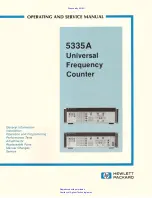
Page 7
COIN RECOGNITION
See Figure 3
As a coin enters the changer through the acceptor
funnel, its impact is absorbed by a white ceramic rail
which debounces the coin and allows it to continue
down the coin rail at a smooth and steady speed. As
a coin rolls down the rail, it passes between two sets
of LED sensors which measure the speed and size
of the coin. The coin also passes between two sets
of coils which measure the metallic content of the
coin. These measurements are used to determine if
the coin is valid and the value (denomination) of the
coin.
COIN SEPARATION
See Figure 3
After the coin's validity has been determined the coin
rolls off the end of the coin rail and enters the
separator section of the acceptor. The UPPER
(coin tube) gate and the LOWER (cash box) gate
are opened and closed by their respective solenoids.
These solenoids are energized and de-energized by
an electrical signal from the acceptor logic board
based on the following criteria:
the validity of the coin.
the denomination of the coin.
the status (full or empty) of the appropriate coin
tube.
The positions of these two gates cause the coin to be
routed to one of three places: the appropriate
changer coin tube, the vendor cash box, or if the coin
is rejected, the vendor coin return cup.
REJECTED COIN
See Figure 4
If a coin is rejected for any reason, both the UPPER
(coin tube) and the LOWER (cash box) gate will
remain closed. All rejected coins will drop into the
vendor return cup via the coin changer coin return
chute.
Section 3: Operation
Figure 3
Figure 4
Summary of Contents for 9300-S Series
Page 1: ...Coinco 9300 S SERIES ELECTRONIC CHANGER OperationandServiceManual...
Page 6: ...Page 6 Section 2 Installation Figure 2...
Page 18: ...Page 18 9341 S Wiring Diagram fig 14 Section 5 Troubleshooting...
Page 19: ...Page 19 Section 5 Troubleshooting 9342 S Wiring Diagram fig 15...
Page 20: ...Page 20 Section 5 Troubleshooting 9360 S Wiring Diagram fig 16...
Page 21: ...Page 21 9300 S Series Changers Section 6 Accessories...


































